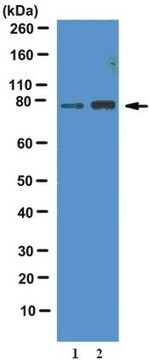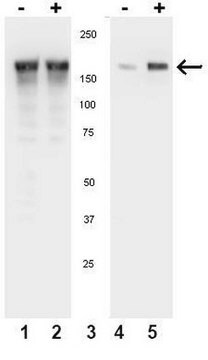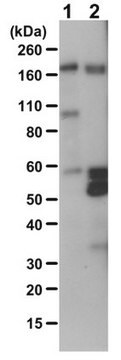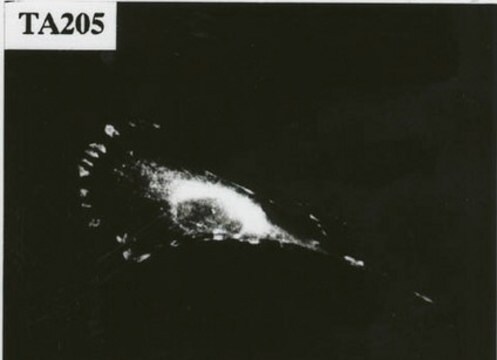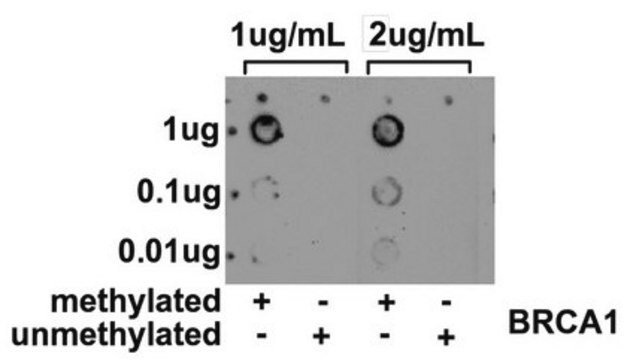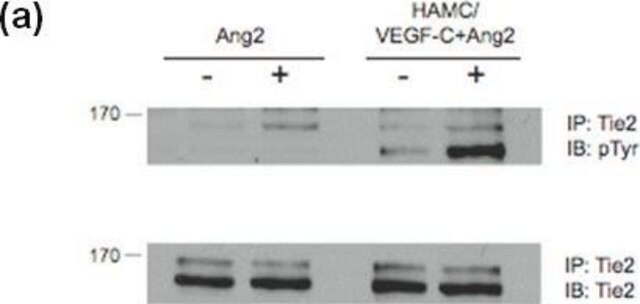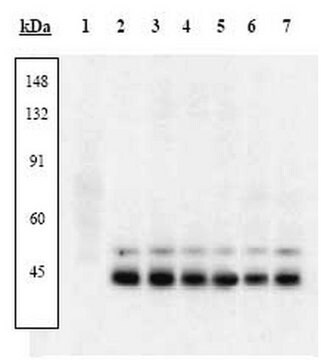16-104
Anti-Phosphotyrosine Antibody, clone 4G10®, FITC conjugate
clone 4G10®, Upstate®, from mouse
About This Item
Productos recomendados
origen biológico
mouse
Nivel de calidad
conjugado
FITC conjugate
tipo de anticuerpo
primary antibodies
clon
4G10®, monoclonal
reactividad de especies (predicha por homología)
all
fabricante / nombre comercial
Upstate®
técnicas
immunocytochemistry: suitable
Condiciones de envío
wet ice
modificación del objetivo postraduccional
phosphorylation (pTyr)
Información sobre el gen
human ... PID1(55022)
Descripción general
Especificidad
Inmunógeno
Aplicación
Signaling
General Post-translation Modification
Calidad
Forma física
Almacenamiento y estabilidad
Nota de análisis
Pervanadate-treated human A431 cell extracts or EGF-treated human A431 cells
Información legal
Cláusula de descargo de responsabilidad
¿No encuentra el producto adecuado?
Pruebe nuestro Herramienta de selección de productos.
Código de clase de almacenamiento
12 - Non Combustible Liquids
Clase de riesgo para el agua (WGK)
WGK 2
Punto de inflamabilidad (°F)
Not applicable
Punto de inflamabilidad (°C)
Not applicable
Certificados de análisis (COA)
Busque Certificados de análisis (COA) introduciendo el número de lote del producto. Los números de lote se encuentran en la etiqueta del producto después de las palabras «Lot» o «Batch»
¿Ya tiene este producto?
Encuentre la documentación para los productos que ha comprado recientemente en la Biblioteca de documentos.
Nuestro equipo de científicos tiene experiencia en todas las áreas de investigación: Ciencias de la vida, Ciencia de los materiales, Síntesis química, Cromatografía, Analítica y muchas otras.
Póngase en contacto con el Servicio técnico